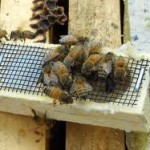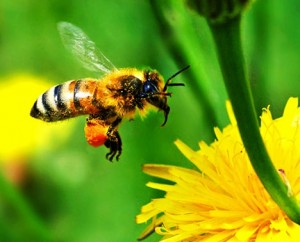 Russian Hybrid Honey Bees are one of the newer bee stocks in the U.S. The Department of Agriculture’s Honey Bee Breeding, Genetics and Physiology Laboratory in Baton Rouge, Louisiana have produced queens derived from bees found on the far eastern side of Russia in the coastal Primorski region on the Sea of Japan and around Vladivostok.
Russian Hybrid Honey Bees are one of the newer bee stocks in the U.S. The Department of Agriculture’s Honey Bee Breeding, Genetics and Physiology Laboratory in Baton Rouge, Louisiana have produced queens derived from bees found on the far eastern side of Russia in the coastal Primorski region on the Sea of Japan and around Vladivostok.
The researchers’ logic was that these Russian Bees have coexisted for the last 150 years with the devastating ectoparasite Varroa destructor, a mite that is responsible for severe colony losses around the globe. Moreover, they are also highly resistant to tracheal mites, the other major enemy of honey bees here in the West. While these bees are much more expensive than other strains and require special management techniques, they may be the only answer to the Varroa problem. Such stock very importantly also provides a chemical free alternative to pest control.
The USDA tested whether this stock had evolved resistance to varroa and found that it had, with numerous studies showing that bees of this strain have fewer than half the number of mites that are found in standard commercial stocks.
Russian Hybrid bees also tend to rear brood only during times of nectar and pollen flows, so brood rearing and colony populations tend to fluctuate with the environment, thereby suiting them better for areas with more severe and longer winters.
Russian Hybrid Bees also exhibit some unusual behaviour compared to other strains. For example, they tend to have queen cells present in their colonies almost all the time, whereas most other stocks rear queens only during times of swarming or queen replacement. Russian Hybrid bees also perform better when not in the presence of other bee strains as research has shown that cross-contamination from susceptible stocks can lessen the varroa resistance of these bees.
More about Honey Bee Hybrids and Strains

